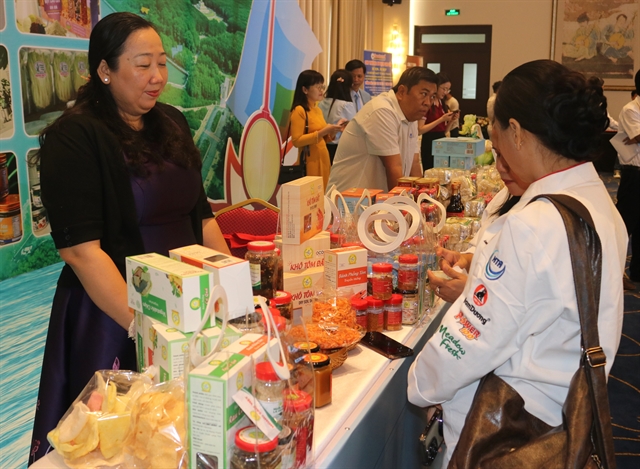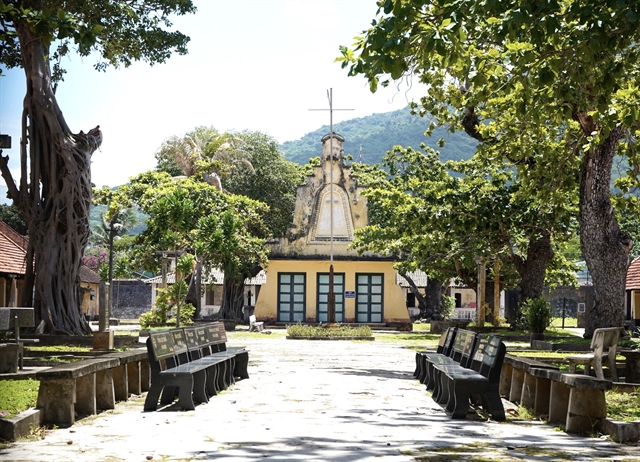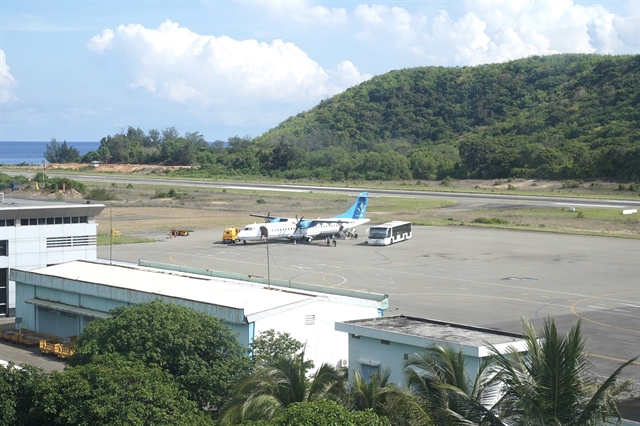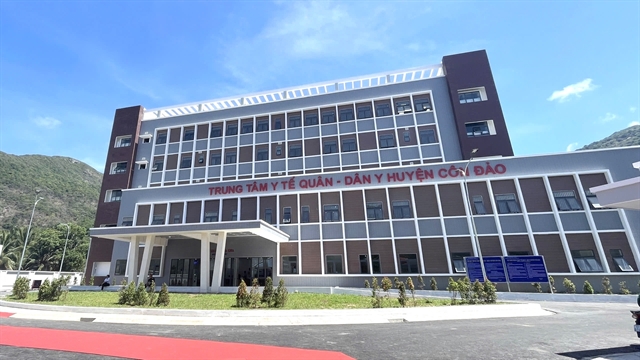 Sunday/Weekend
Sunday/Weekend

 |
| Phú Hải Prison in Côn Đảo Island District in Bà Rịa Vũng Tàu Province. VNA/VNS Photo Huỳnh Sơn |
Once dubbed "Hell on Earth", Côn Đảo Island in Bà Rịa Vũng Tàu Province has transformed itself into an eco-tourism, historical, and spiritual destination.
Located more than 230 kilometres from the mainland, the island was once notorious for its prison built by the French in 1862 where a great number of Vietnamese patriots against colonialism and imperialism were detained.
Côn Đảo was liberated one day after the fall of the US-backed Sài Gòn regime on April 30,1975, closing a 113-year historical chapter of the prison island.
Just over a year after liberation, in August, 1976, during a return visit to Côn Đảo prison, the then Việt Nam Communist Party General Secretary Lê Duẩn said: "Côn Đảo is a heroic island, a great historical relic, and are valued history lessons for future generations.”
The Côn Đảo Prison Relic Complex, along with the Hàng Dương and Hàng Keo cemeteries, have become symbolic sites for educating future generations about patriotism and revolutionary struggle.
Inheriting the resilient and indomitable spirit of their forebears, generations of officials, soldiers and residents have united and overcome many challenges to build and develop the island district.
 |
| Côn Đảo Airport features a 1,830-metre-long runway that accommodates ATR 72 aircraft and similar models. Currently, two airlines operate flights to and from the island. VNA/VNS Photo Huỳnh Sơn |
Today, Côn Đảo District boasts a well-invested transport system. High-speed ferries connect the island to Trần Đề District in Sóc Trăng Province, Vũng Tàu City, and HCM City in the mainland, making travel more convenient for residents and tourists alike.
Côn Đảo Airport features a 1,830-metre-long runway that accommodates ATR 72 aircraft and similar models. Currently, two airlines operate flights to and from the island.
Trần Hữu Trung, a local resident, says the island has changed a lot.
“Roads are now well-built and clean, and various means of transport connect the island to the mainland by sea and air, making travel easier for locals,” he says.
Electricity and water services on the island have also received substantial investment to meet the living needs of residents and business operations.
The construction of an electricity supply project connecting Côn Đảo to the national grid from Vĩnh Châu town in Sóc Trăng, with a total investment of more than VNĐ4.9 trillion (US$187.5 million), started in March, and is expected to be completed by September this year.
 |
| Students studying at a class in the Cao Văn Ngọc Primary School in Côn Đảo Island. — VNA/VNS Photo Huỳnh Sơn |
The district currently has three kindergartens, one primary school, and two secondary schools.
Võ Thị Hoa, a teacher at the Cao Văn Ngọc Primary School, says that thanks to support from all levels, schools in Côn Đảo have been well-equipped with modern facilities.
“Teachers have access to a full range of teaching tools, and lessons often incorporate IT and AI technology to make learning more engaging, contributing to improved teaching and learning quality,” she says.
The Côn Đảo Military-Civilian Medical Centre was recently inaugurated with five floors. The centre’s first phase includes 60 beds and specialised wards such as emergency and ICU, imaging, and surgery.
This facility meets the healthcare needs of local soldiers, residents, and tourists.
Numerous public works supporting livelihoods and socio-economic development continue to be expanded.
 |
| The Military-Civilian Medical Centre on Côn Đảo Island. VNA/VNS Photo Huỳnh Sơn |
The information network has grown rapidly, with internet, Wi-Fi, 4G, satellite, and terrestrial digital TV now covering almost the entire main island of Côn Sơn and surrounding smaller islands.
Material and cultural life for local residents has significantly improved.
Côn Đảo also promotes cultural development, organising annual cultural, musical, sports, and traditional festivals such as the Phi Yến Commemoration, Võ Thị Sáu Hero Memorial, and the Traditional Raft Race, meeting both residents' and visitors' cultural needs.
Towards green, sustainable tourism
Côn Đảo is the first district-level locality in Việt Nam to implement the Circular Economy Development Project for the 2022–25 period, with a vision to 2030.
The project leverages its pristine natural resources and nationally significant historical relics to promote green and sustainable economic development.
In addition to its historical significance, Côn Đảo is blessed with one of the country’s most diverse and rich ecosystems.
In recent years, it has emerged as a renowned tourist destination, attracting large numbers of domestic and international visitors with its unique brand of eco-tourism, cultural tourism, heritage tourism, and resort tourism.
Côn Đảo National Park is recognised as an international Ramsar site and an ASEAN Heritage Park.
The park covers nearly 20,000 hectares, including 6,000 hectares of forest and 14,000 hectares of marine area, and features a diverse, pristine ecosystem.
The former Côn Đảo Prison is also recognised as a special national historical heritage site, comprising 20 relics that preserve and promote the nation's patriotic spirit.
Côn Đảo’s natural scenery and environment have repeatedly received praise from major media outlets, with the island often ranked among the world’s most beautiful tourist magnets.
Most recently, the UK-based magazine Time Out listed the island among 24 top unspoiled travel destinations.
Currently, the district has 146 lodging facilities with a total of 2,923 rooms, accommodating up to 7,598 guests per day.
 |
| Tourists participate in releasing turtles into the sea at Côn Đảo National Park. — VNA/VNS Photo Huỳnh Sơn |
These include one five-star resort, five four-star and three three-star hotels, and 137 other accommodations ranging from one to two-star hotels to guesthouses and homestays.
In recent years, Côn Đảo has welcomed over 500,000 visitors annually, with average revenue reaching VNĐ1.4 trillion ($53.6 million).
Decision No. 566/QĐ-TTg issued by the Prime Minister on June 26, 2024 approved a master plan for Côn Đảo’s development until 2045. Accordingly the island district will be developed as a national-level marine cultural-historical-ecotourism area of regional and international significance.
It will also be a hub for preserving nationally important historical relics and a diverse ecosystem of forests, seas, and wetlands with strategic value for national defence and security.
From a place once known as “Hell on Earth”, Côn Đảo has risen to become a precious gem in the East Sea - a site of both painful memories and great pride, where unspoiled nature intertwines with heroic history.
Amid the modern pace of life, the island serves as a reminder of the struggle for independence and freedom.
Looking back on its 50-year journey, every resident of Côn Đảo takes pride in their history and believes in a bright future ahead. VNS




